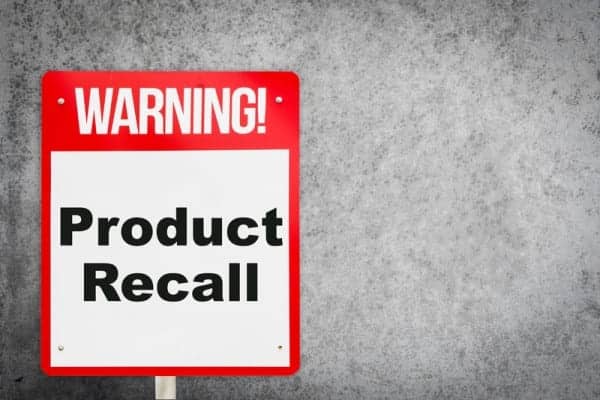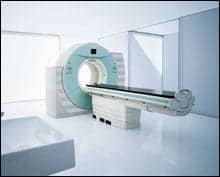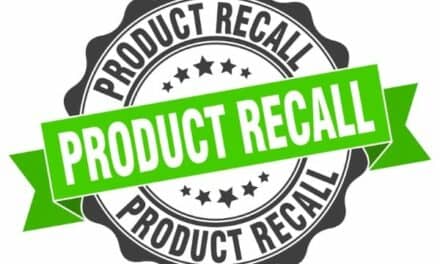Dealing with device recalls can be a challenge for any hospital, but new regulations and technologies are starting to make this work a little easier.
By Chris Hayhurst
As a biomedical engineer with a half-decade of experience in various roles at three Veterans Affairs hospitals, Arleen Thukral, MS, CCE, knows the importance of a strong equipment management strategy. Still, she says, even the best can run into trouble—especially when it comes to dealing with medical device recalls.
“The inventory management process in place at the VA is very effective,” notes Thukral, who is currently the acting chief of biomedical engineering at the VA Medical Center in Seattle. All VA facilities, she says, use a computerized maintenance management system, and up until two years ago would monitor recalls by cross-referencing ECRI Institute’s weekly “Alerts Tracker” list and scanning it for devices in their own inventories.
Now, however, they use a “more-centralized process,” subscribing to a recalls and alerts management system run by the VA’s Center for Engineering and Occupational Safety and Health (CEOSH).
CEOSH, Thukral says, takes ECRI, FDA, and manufacturer letters; VA Central Office/VA National Center for Patient Safety alerts; as well as incident investigation results from other sites, compares them to inventory items across VA facilities nationwide, and then sends out alerts only to those sites that need to take action per their notes. “Now, we only hear about the issues that pertain to us,” Thukral says.
In fact, the only recurring recalls-related challenge that she cites has nothing to do with fielding alerts or tracking inventory items. (Some alerts, however, do require version verification, she maintains.) But the biggest issue, according to Thukral? Not knowing when the manufacturer of a recalled device will take the time to perform the necessary repairs.
“For some alerts,” Thukral says, “vendors are allowed until a certain date” to complete remediation work in all affected facilities. The result is that healthcare organizations have little visibility on where in the queue a particular facility is and when they will be notified for parts delivery or remediation actions. “Sometimes that means that your recall work orders might remain open for months,” Thukral says.
Recalls by the Numbers
If medical device recalls were a rarity, inconveniences like that described by Thukral would likely seem minor and be handled as they arose. But, unfortunately, dealing with product recalls has become a fact of life for HTM professionals—and that’s unlikely to change anytime soon.
According to a recent analysis by Stericycle ExpertSolutions, a company that helps hospitals and other businesses navigate the recall process, there were 275 medical device recalls issued in the second quarter of 2017.
The average recall size in this time period? 246,000 units—a number “higher than the average of any full year since 2012,” Stericycle reports. So far in 2017, there have been 876,076 Class 1 units recalled per quarter, on average, compared to quarterly averages in 2016 and 2015 of about 310,000 and 276,000, respectively.
“Software problems drove the highest number of recalls…with product mislabeling a close second,” the analysis notes. “When examining the number of units affected, quality issues were the leading cause, followed by mislabeling, parts problems, and sterility concerns.”
There are larger forces driving recalls, as well. (Note: The FDA reports medical device recalls increased by 97% between 2003 and 2012). According to Stericycle, rapid innovation may be partially to blame. “Medical devices are saving lives and improving the quality of life for millions of patients,” the company’s vice president of commercial and client services said in a statement. “But as medical technology advances and becomes more complex, these innovations can be more prone to defects, and therefore, more vulnerable to recalls.”
The FDA’s own report on the subject lists two other reasons for increasing recalls: “Enhanced awareness” by medical device companies, especially those that had been previously cited for not reporting problems with their products; and efforts by industry stakeholders, including the FDA’s Center for Devices and Radiological Health, “to improve performance of devices historically associated with high numbers of device problems, such as ventilators, infusion pumps, and external defibrillators.”
A Need for Better Labeling
For biomeds, of course, it hardly matters what the reasons are behind any given medical device recall. More important is how that recall unfolds, from the identification (and location) of affected inventory within the purview of HTM, to the removal of that equipment within the allotted timeframe, to the steps that are necessary to complete remediation and return or replace a product as quickly as possible.
“It’s all about minimizing the effort required to find that product and pull it off the shelf,” says Greg Bylo, vice president of healthcare at GS1 US, the top FDA issuing agency for unique device identifiers (UDIs) for use in the agency’s growing Global Unique Device Identification Database.
The UDI system, Bylo explains, is part of an FDA regulation that went into effect in 2014, when Class 3 (high-risk) products were first required to include “human- and machine-readable” UDIs on their labels. The regulation is still being phased in, he says, and will apply to all medical devices, including Class 1, by 2020. “Prior to the UDI regulation, a medical device would go into distribution and potentially the distributor would relabel that product,” Bylo says.
From there, the device might go to another reseller before finally winding up in a hospital. “And because it was now called or labeled something else, that really caused problems with recalls,” he says. In fact, Bylo was in one meeting with the FDA where they looked at a product (he doesn’t want to name it) that had 15 different catalog numbers associated with it, in addition to the manufacturer’s original label.
“Think about it,” Bylo says. “If there’s a recall on this product, how many different notifications are going to go out based on all these different catalog numbers? For a hospital that now has to go through their inventory and check it against all the variations, it becomes challenging and potentially very time-consuming.”
The UDI system should eliminate such issues once it is fully implemented, Bylo says, and is already starting to make a difference for recalled Class 2 and Class 3 devices. “What you get with the UDI is a single label that’s used from start to finish. The problem we’re seeing is that some suppliers are still in the process of preparing to meet the regulation—and are still putting their own catalog numbers on these devices.”
His advice to biomeds? Demand that suppliers only provide products that have been properly labeled. “It affects inventory management; it affects recall management; and it directly impacts financial savings and patient safety,” Bylo says. “You need to be insistent because it affects your bottom line.”
He’s likely not alone in his assessment. Nick Cordaro, CEO of San Antonio-based Watershed Idea Foundry, a company with a newly launched device parts-marking solution dubbed “Structural Encoding,” for instance, says issues around labeling and trackability could be resolved if more manufacturers turned to technologies like theirs. (The Structural Encoding process embeds data within a device so that it can be read using medical imaging—as might be required for an implant, for example.)
“When everything you need is inside the device, it doesn’t matter if a tracking sticker was peeled off, or whether the lot number was recorded correctly,” Cordaro says. “In the event of a recall, identification is easy.”
Managing Recalls with Customer Service
One company that prides itself on its ability to track its products—and offer assistance in the event of a recall—is Houston-based US Med-Equip. A medical equipment-rental specialist with around 25,000 units in 1,000 hospitals nationwide, the company claims to have “99.8% inventory accuracy” thanks to its use of passive radio-frequency identification (RFID) tags, combined with proprietary tracking software it developed in-house.
“The way it works for us,” says Steve DuMenil, US Med-Equip’s director of risk management, “is once we hear about a recall from either the manufacturer or from an FDA notification, we work with the manufacturer directly to determine exactly what products are involved.” Once they have a list of product numbers, he says, they immediately alert their affected customers and connect them with the manufacturer to start the remediation process.
“And if it looks like it’s going to take too long for the manufacturer to complete that work, a lot of times our biomeds will work with the manufacturer to do it.” In that case, DuMenil explains, a biomed team from US Med-Equip, with manufacturer guidance, will go to a facility and work directly with their HTM department and “either do the remediation onsite or remove the equipment and bring it back to one of our service locations.”
One recent recall of infusion pumps involved just five devices out of the 300 total pumps that one of their customers rented from them, DuMenil recalls. “It was a needle-in-the-haystack scenario: ‘How do you find these five devices when they could be just about anywhere?’”
Simple, he says: “We used our RFID technology to go back to where the pumps were last scanned, and we immediately found three that were in a PAR level, and then the other two we found in patient rooms.”
Moreover, the RFID scanners found all the pumps from the hallway without entering each room and disturbing the patients. They then swapped the pumps out for temporary replacements and took them off-site to complete the requirements of the recall. “We were at the facility for just a couple of hours,” DuMenil says. “And because we were able to work with the manufacturers to do it, it took no time away from the biomed department.”
The way he sees it, DuMenil says, is that the recall process is always a little easier when those involved enjoy open communication. He understands the frustrations of HTM professionals like Arleen Thukral who wonder if—and when—certain recalls will be resolved, and he sees it as his job to step in when possible to ease their anxieties.
“The manufacturers want to do the right thing, but sometimes they don’t act fast enough—they have trouble coming up with a plan of resolution right away. And we know what that feels like for biomeds,” who are knee-deep in repairs and can’t afford to waste a minute of their day.
US Med-Equip’s goal, DuMenil says, is to help HTM professionals do the work they’re trained to do. “They really don’t have time to deal with recalls on our rental equipment, so we do everything we can to handle them with our technology and minimal involvement from hospital biomeds.”
Chris Hayhurst is a contributing writer for 24×7 Magazine. For more information, contact chief editor Keri Forsythe-Stephens at [email protected].






The va hospitals have been buying recalled devices on purpose. People are getting paid vacations and bonuses in exchange for buying these recalled devices. It’s a web of crap that nobody is talking about. The surgeons know that for example a hip has been recalled. They surgically put it in knowing it will have to be taken out and replaced in a couple years. The va also tells these veterans that they have no right to know what device is being installed or whether or not it has been recalled.